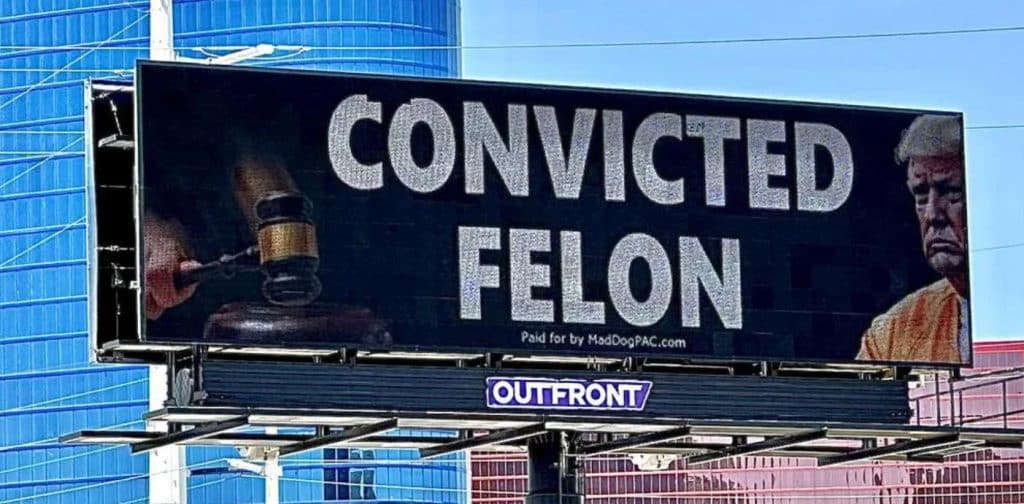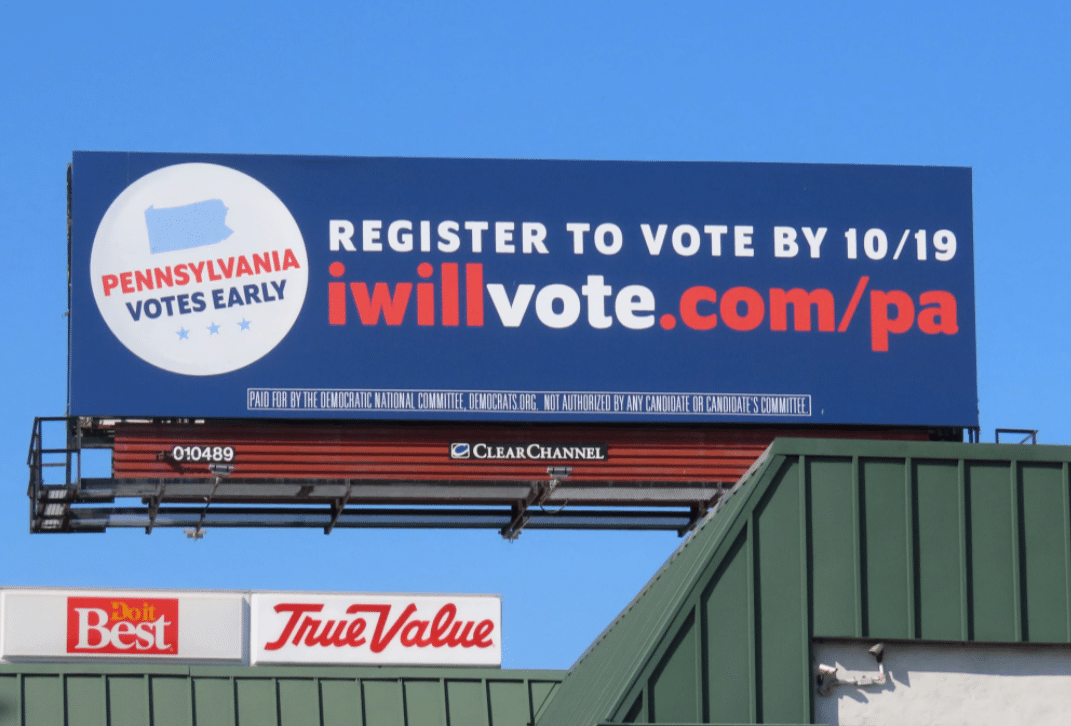The 2024 Presidential Election is here. Billboards are about to be a huge media format for the battleground states. Whether it is Wisconsin, Georgia, Pennsylvania, Nevada or Arizona. You can be sure billboards with cutting messages will begin to hit the streets.
Nevada, just had a slew of cutting billboards lambasting Donald Trump. Here is a gentle example.

Billboards will Boom in 2024 for Political Advertising
At a time when traditional television watching levels are dropping (even amidst the pandemic, when people were forced indoors for months), and traditional media has been seeing big declines in total ad spending even pre-pandemic, it seems surprising that more money wouldn’t be funneled to outdoor.
After all, out of home has been one of the few traditional media segments to not just hold up but actually grow amidst the rising popularity of new media.
“In the past, political ad spending heavily utilized TV advertising to achieve broad reach in target markets, but in recent years, we’ve seen a migration to online due to the ability to target and hyper-target key voters,” says Kym Frank, president at Geopath.
Going forward, that may change. Analysts say they are seeing a shift toward more OOH spending by political campaigns, but for now, TV will continue to make up the bulk. “We will have to wait to see the final tally once election season is over, but just from what I have been hearing and seeing, OOH certainly does appear to be playing a factor in regional and local elections at least,” Frank notes.
Here’s a look at what’s been holding billboards back and how that may evolve.
1. Billboards Are Best Used for Branding
Traditionally, businesses have purchased billboards to assist them with branding, and for good reason. You see a billboard only long enough to take in a short, impactful message, and that’s what branding is all about.
Well, in the presidential race, the candidates have already staked out their brands. No one’s wondering what Joe Biden or Donald Trump is all about, and billboards aren’t the best medium to carry more complex messages.
2. It’s Easy to Fact-Check Billboards
While you can deliver a more layered message on television, making claims that are easier to elaborate on and obfuscate because the content is delivered in 30 seconds to a minute, billboards need clear, concise information, or they won’t be effective. That means it’s also easy to fact-check whether the claims are true — which can derail ads pretty quickly.

3. Politics Is a Traditional Business
Until the people running for office and in charge of campaigns begin to change (and let’s face, the two men running for the highest office in the nation are well into their 70s), you won’t see old ways going by the wayside. Even if television is no longer the most effective medium, it’s still perceived that way by decisionmakers.
It took decades for online to start pulling a larger share of ads, and even now, it’s not as high as you’d expect. It will take likely even longer for billboards.

4. Sometimes It Isn’t Worth It
Billboard owners’ profit margins are often thin. In such a divisive political time, running political ads at all can be a risk. The Trump campaign has filed several lawsuits against media companies, including a tiny TV station in Wisconsin that ran an ad the campaign claims is defamatory. Other stations ran it, but Trump targeted this one station only. The suit has been expensive for the station and is seen as capricious by many in the legal community — almost as a warning shot.
Will Political Spending on OOH Rise in the Future?
In a word, yes; in eight words, yes but remember that’s from a minuscule base.
Most analysts do foresee higher spending this year on political billboards than in 2018, when political spending hit its last record tally. They cite several reasons:
- Greater value-added reach, which means people share interesting billboards on social media, and that can make your buck go further. For instance, when short-lived Democratic presidential candidate Michael Bloomberg bought billboards with sarcastic one-liners about President Donald Trump, they were shared all over Twitter and Instagram.
- CPMs and billboard pricing remain relatively low for OOH compared to other media, and when you need to stretch a dollar, it represents a good value.
- Outstanding targeting opportunities make OOH attractive for the first go-round, with the chance to follow up on mobile. “OOH offers the ability to retarget individuals who have seen OOH ads with mobile ads. This allows the reach of other advertising channels to be amplified,” says Frank.
- Digital billboards can be swapped out quickly, and since political messaging changes by the day (remember how Biden tabled his negative ads when Trump got COVID), that flexibility is a boon.
The timeliness of OOH has been muted somewhat by the pandemic with more people working at home with no commutes and avoiding public transportation due to virus fears. The advantage will return eventually though, including OOH’s unique ability to reach people who try to avoid ads at all costs. Think young adults who’ve grown up with the ability to stream content on-demand and avoid watching ads. They have little patience for traditional advertising, but they can’t avoid OOH.
“The ‘ad avoiders’ are also more likely to be in locations where there are out of home ads, as they are 26% more likely to say they are regular moviegoers, 14% more likely to have traveled domestically, 65% more likely to take a bus, and 14% more likely to take other forms of public transportation like subways or trains,” Frank says. “In fact, on average, ‘ad avoiders’ travel 19 miles more per week than the total population – giving them that many more opportunities to see an OOH ad.”
We’d love to see more political ads on billboards — we think it’s a fantastic medium, and there’s lots of room for creativity in campaigns. But we’re skeptical till we actually view the 2020 numbers.

